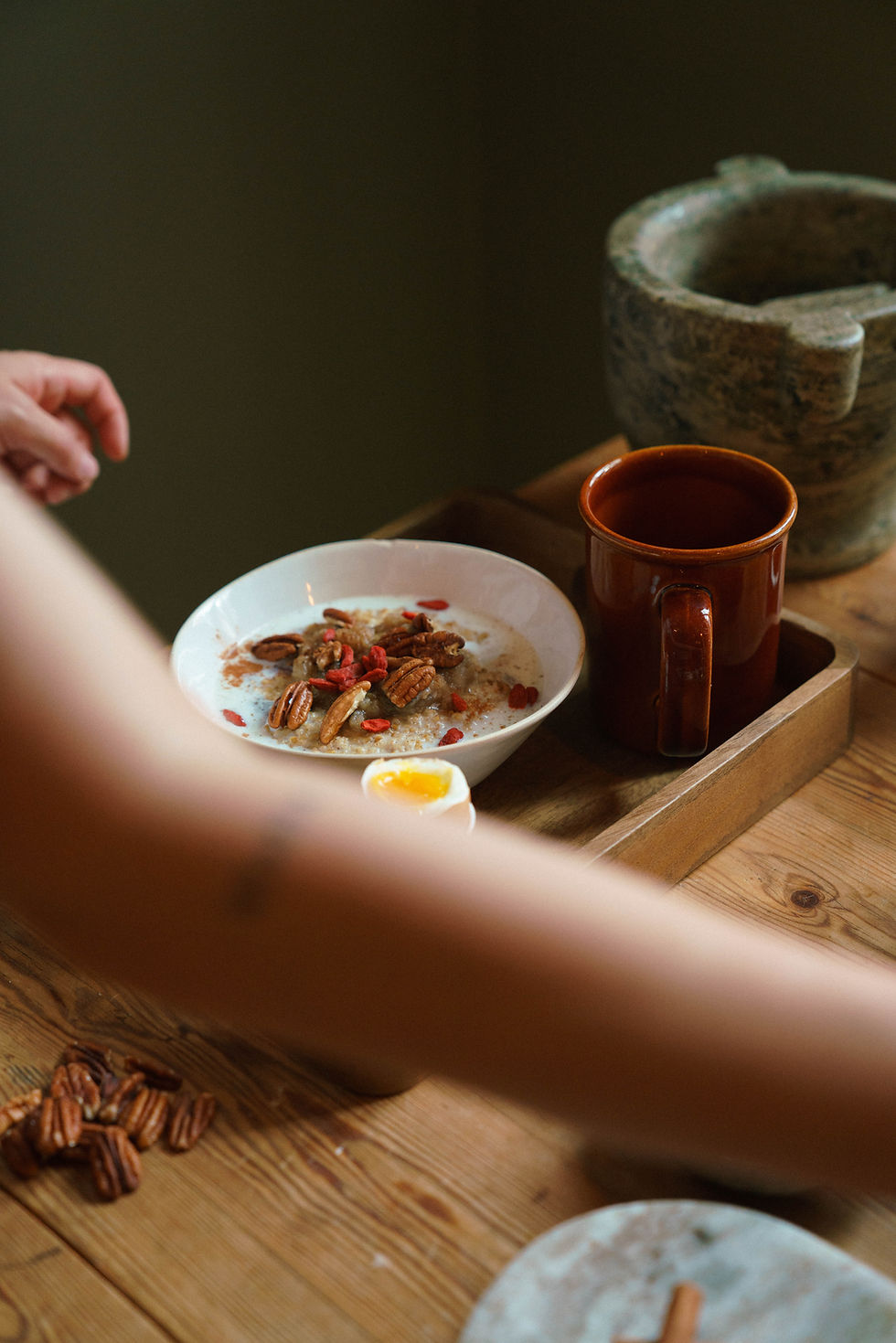Postpartum appropriate foods according to the 3 phases of healing in Traditional Chinese Medicine
- Julianna Werner

- May 17
- 2 min read
Traditional Chinese Medicine is one of my major sources of inspiration when it comes to traditional postpartum healing practices and food as medicine. I have had the great honor of learning about East Asian postpartum traditions from Naomi Jansson, Doctor of Chinese Medicine and traditional postpartum care practitioner. I want to acknowledge that this wisdom belongs to East Asian cultures where it is a living tradition that dates back thousands of years.

The three phases of postpartum healing in TCM
Traditional Chinese Medicine recognizes that postpartum healing occurs in phases. For each of these phases, the mother is encouraged to eat specific foods to support the recovery process and restore balance. It is also important to be aware of what foods to avoid, as certain foods are cooling while others are neutral, warming (ideal) or even heaty in nature. Some dishes are also more cleansing than nourishing, and should therefore not be eaten for extended periods of time.
Phase 1
The body, which opened both physically and energetically to birth the baby, is now eliminating excess fluids, lochia and possible toxins from any medications that were given at birth. Rest is the primary medicine during this phase. The dishes and drinks consumed should be watery and easily absorbed so as to not add any extra strain on the healing body. They are often made with gently warming, anti-inflammatory, and cramp relieving ingredients. In Traditional Chinese Medicine, as well as Ayurvedic medicine, it is believed that there is a risk of wind (cold air) getting trapped inside the woman’s body when it is open and vulnerable, so warming ingredients are key to avoiding health problems in the future.
Phase 2
The focus during the second phase is to promote metabolism, heal any injuries from birth and support the physiological process of closing, which includes the organs moving back into their correct places. The body is designed to close, but some practices that can be supportive are breastfeeding, skin to skin contact with baby, belly wrapping, gentle massage and of course, rest. The dishes introduced in phase two contain more protein and fat. Mothers from the Southern regions of China traditionally eat collagen rich pig trotters. Another alternative is homemade bone broth which is lubricating for the intestines and promotes wound healing. Broths can actually be introduced already in phase one, together with soups and lighter stews.
Phase 3
Phase three is all about nourishing the body. The food that is prepared for the mother should address key deficiencies and imbalances, nourish blood, promote circulation of energy (Qi) and blood. The mother’s metabolism, or digestive fire, should now be strong enough to process more complex and nutrient dense foods. There is a stronger emphasis on red meat, organ meat and animal fats.
Many sources will also add a fourth phase, dedicated to the replenishment of what was given to the baby at the deep matrix level during conception. How long each phase is varies between mothers depending on individual factors.
Although traditional wisdom teaches how to support these phases of postpartum recovery, each new mother will inevitably go through them with or without active management. Too much doing can actually cause harm by interfering with rest, which is fundamental in order for healing to take place.

